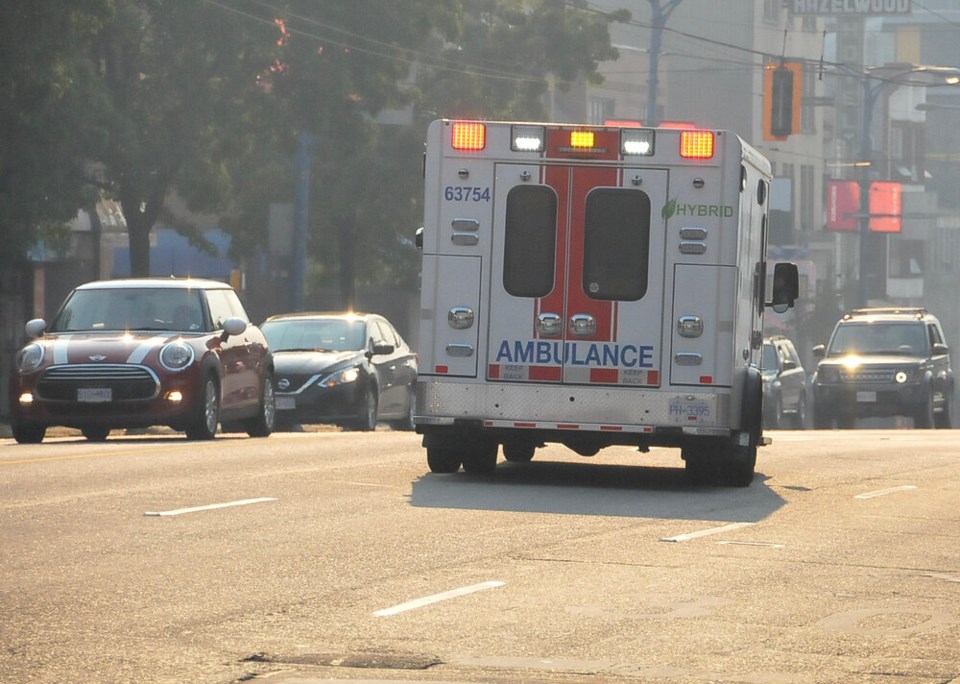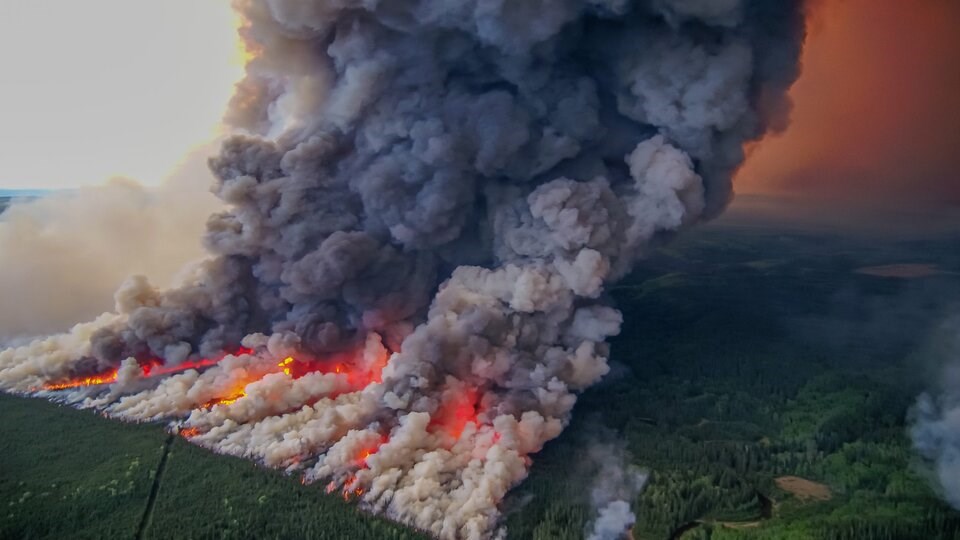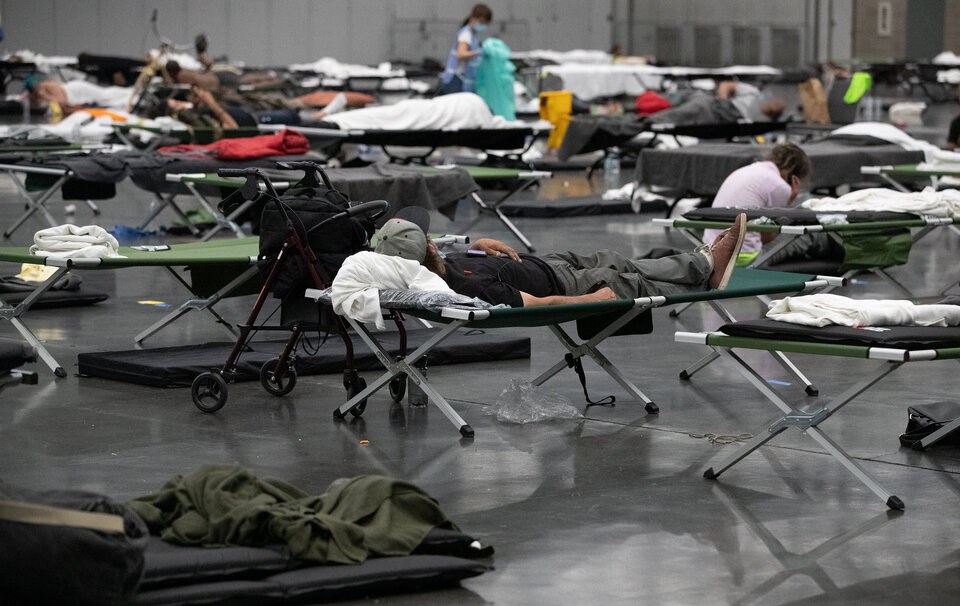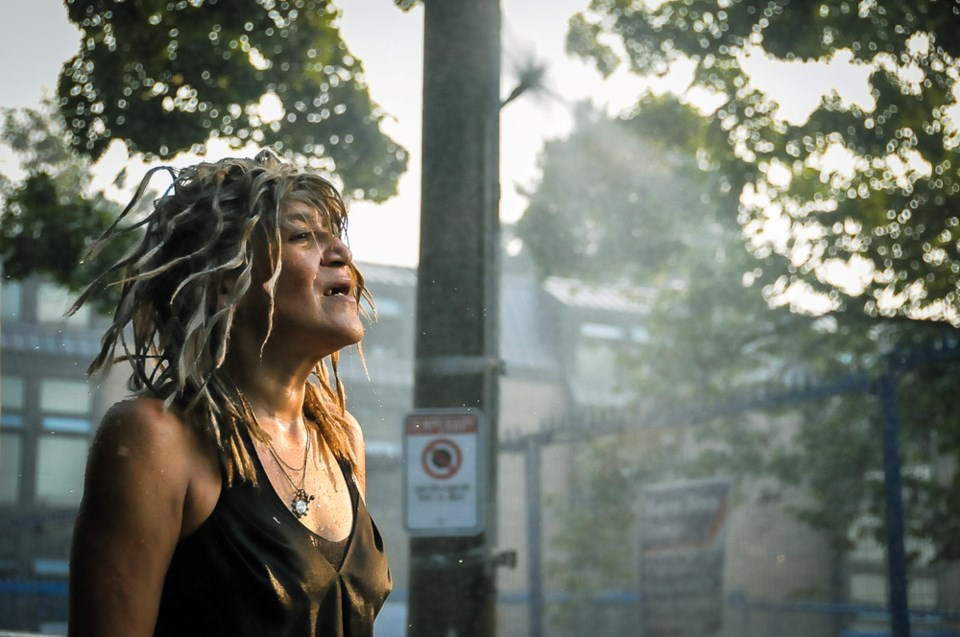Hundreds of millions of people born in recent years—including hundreds of thousands of Canadians—are expected to be hit hardest by a rise extreme weather events, a new study has found.
The global study, published in the journal and led by Canadian Luke Grant, found that the number of people facing unprecedented lifetime exposure to heatwaves, crop failures, river floods, droughts, wildfires and tropical cyclones will at least double from 1960 to 2020 if current policies to avoid global warming aren’t strengthened.
Instead of measuring exposure to extreme weather based on assets damaged, or people harmed and killed, the study measured impacts based on “unprecedented lifetime exposure”—a threshold beyond which the frequency of exposure is extremely unlikely in a world without climate change.
Current policies to draw down global warming are expected to limit temperature increases to 2.7 C above pre-industrial levels by 2100.
But at only 1.5 degrees Celsius of global warming, 62 million children—more than half the people born in 2020—face exposure to a lifetime of unprecedented heat waves, the study found.
That number goes up to 92 per cent, or 111 million people worldwide, if global temperatures climb to 3.5 C above pre-industrial levels.
“The most important point here is emissions of earlier generations is having a disproportionate impact on later generations,” said Grant.
Younger Canadian generations to see major increase in exposure to extreme events
In addition to its global findings, the study broke down exposures to extreme weather events by country.
Under the Paris climate accords, countries around the world promised to keep global temperatures below 1.5 C of warming above pre-industrial levels.
In that scenario, 43 per cent of Canadian babies born in 2020 would see a spike in exposure to unprecedented heat waves, up from 19 per cent for those born in 1960.
At 2.5 C warming, exposure rises from 13 per cent to 76 per cent between the two cohorts.
And at 3.5 C of warming, the researchers calculated that 98 per cent of Canadian babies born in 2020 (370,000 individuals) would see unprecedented exposure from heat waves, up from 18 per cent, or 74,000 babies, born in 1960.

Major increases in exposure to wildfire, crop failures and flooding were also found between the Canadian generations.
Under all warming scenarios, only two per cent of those born in 1960 are expected to face unprecedented exposure to wildfires. But for those born in 2020, that number climbs to between 14 and 23 per cent depending on the depth of global warming.
Meanwhile, unprecedented crop failures are expected to impact up to 11 per cent of Canada’s population born in 2020, up from two per cent for those born in 1960.
And when it comes to flooding, up to 14 per cent of babies born in 2020 are expected to face unprecedented impacts, a major increase from the one per cent of babies affected who were born in 1960.

Grant warned that the country level data could see major swings as climate change progresses and people react to their new reality.
Regardless of the final numbers, he said Canada’s current affordability crisis means young people face the prospect of rising costs at the same time they will be exposed to more frequent and powerful heat waves. That will leave many people even more vulnerable to extreme weather, he said.
“What’s special about our study is that it’s multidisciplinary—we’re taking a lot of effort to draw a connection between climate modelling and the human experience,” said Grant.
Climate action could prevent dangerous heat wave exposure for hundreds of millions of children
Now a physical scientist with Environment and Climate Change Canada based in Victoria, Grant carried out the study using work he did during his PhD studies in Brussels, Belgium.
The study pointed to the European city as an example, noting a person born in Brussels in 1960 would go on to see three unprecedented heat waves in their lifetime there.
Babies born in 2020, meanwhile, were projected to experience 11 heatwaves under 1.5 C of warming; 18 heatwaves under 2.5 C of warming; and 26 heatwaves under a 3.5 C increase in global temperature.

At a global level, if warming were to increase to 3.5 C above pre-industrial levels, 29 per cent of children born in 2020 will face unprecedented exposure to crop failures while 14 per cent would face unprecedented exposure to river floods.
​On the other hand, keeping warming to 1.5 C above pre-industrial levels by 2100 would protect huge swaths of some of humanity's youngest generations, the study found.
Compared to the 2.7 C of warming expected under current policies, the Paris climate accord target would allow 613 million children born between 2003 and 2020 to avoid such lifetime exposure to heat waves. ​
​Another 98 million of these children would avoid the impacts of crop failures; 64 million wouldn’t see river floods; 76 million would stay out of the way of tropical cyclones; 26 million would sidestep drought; and 17 million would evade wildfires.
Numbers are ‘conservative’ estimates
In focusing on the local impacts of extreme weather events, the researchers did not analyze how people might adapt (say by buying a heat pump or air conditioning unit) or fail to adapt (by not having money to do so).
The study also did not look at how the effects of climate change can cross jurisdictions.
The researchers pointed out gaps in their data when it comes to knock-on effects to taxation as governments spend to rebuild damaged public infrastructure. The researchers also left out potential disruption to supply chains and how the collapse of a country’s agricultural breadbasket could draw down the availability of food across the globe.
Even the direct, but non-local, impacts of wildfire smoke weren’t captured by the study—an impact made more tangible this week in published by the Canadian Medical Association Journal. That study found Canada’s 2023 wildfires led to daily increases of 11 per cent to 24 per cent in asthma-related emergency department visits across 30 public health units in Ontario.
Together, those gaps mean the study's estimates are conservative, the authors note, with extreme events likely to affect a growing share of the world’s youngest people.



